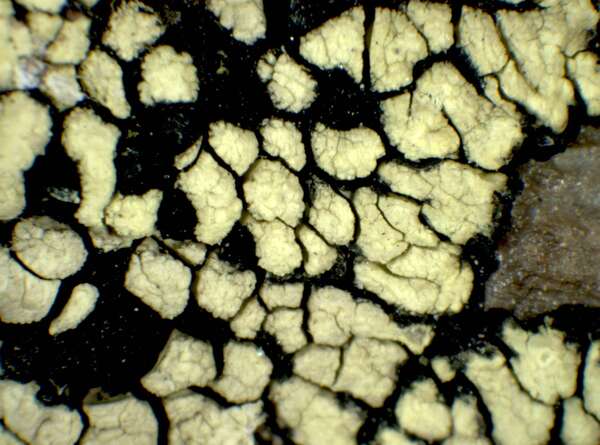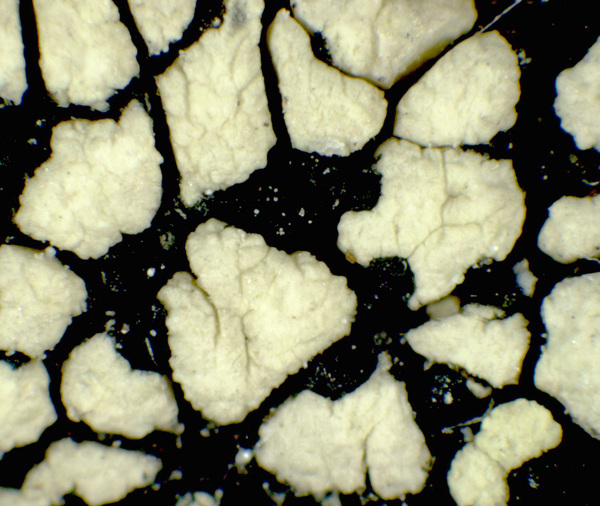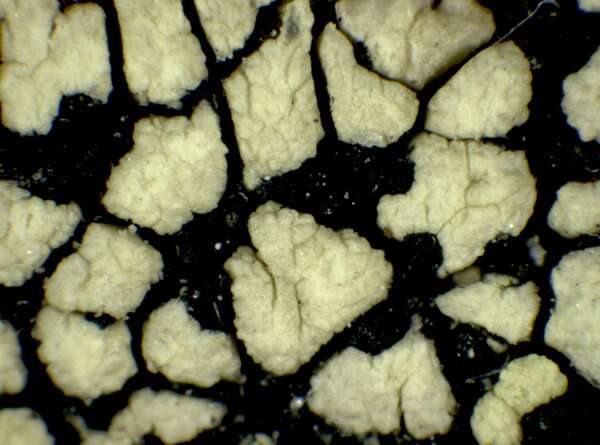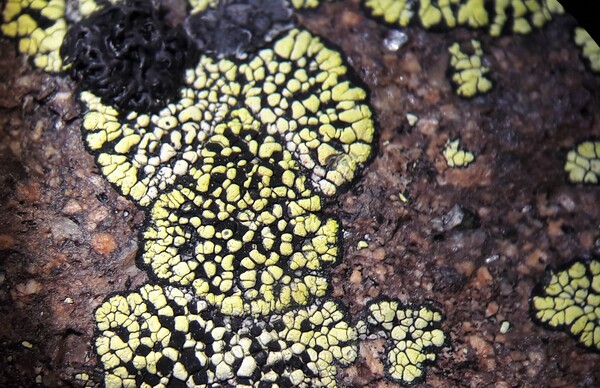Rhizocarpon effiguratum (Anzi) Th. Fr.
Lichenogr. Scand., 2: 613, 1874. Basionym: Buellia effigurata Anzi - Cat. Lich. Sondr.: 90, 1860.
Synonyms: Catocarpus anzianus Müll. Arg.; Lecidea effigurata (Anzi) Stizenb.; Rhizocarpon italicum Räsänen?; Rhizocarpon sphaericum (Schaer.) Mig.; Rhizocarpon superficiale var. rugulosum (Müll. Arg.) Zahlbr.
Distribution: N - Frl (Tretiach & Hafellner 2000), TAA (Nascimbene & al. 2022), Lomb (Hafellner 2022),, Piem, VA (Piervittori & Isocrono 1999).
Description: Thallus crustose, bright yellow-green, immersed in the thallus of Pleopsidium-species or areolate, sometimes delimited by a black prothallus, forming small patches 0.5-2(-3) cm in diam. Areoles round to angular, the marginal ones often elongate and indistinctly effigurate, weakly convex to bullate, 0.3-0.8 mm wide, smooth or scabrous, epruinose. Cortex poorly differentiated, 40-60 µm thick; medulla white, I+ and K/I+ violet-blue. Apothecia lecideine, black, round to angular, 0.3-0.6(-0.8) mm across, with a weakly to strongly convex disc and a soon excluded proper margin. Proper exciple reddish brown in outer part, K+ reddish violet; epithecium brown, containing irregular crystals, K- or K+ reddish; hymenium colourless, 60-90 µm high; tips of paraphysoids slightly swollen; hypothecium brown, K-. Asci 8-spored, clavate, fissitunicate, with a well-developed tholus, lacking an ocular chamber, Rhizocarpon-type. Ascospores 1-septate, dark brown to black, ellipsoid, (9-)11-14(-18) x 4-8(-10) µm. Photobiont chlorococcoid. Spot tests: medulla K-, C-, KC-, P+ yellow. Chemistry: rhizocarpic acid, psoromic acid, and sometimes traces of stictic acid. Note: a weak competitor found on rain-sheltered or vertical surfaces of siliceous rocks in upland areas, on the thalli of Pleopsidium-species.
Growth form: Crustose
Substrata: rocks
Photobiont: green algae other than Trentepohlia
Reproductive strategy: mainly sexual
In underhangs rarely wetted by rain
paras Pleopsidium-species
Commonnes-rarity: (info)
Alpine belt: very rare
Subalpine belt: rare
Oromediterranean belt: absent
Montane belt: extremely rare
Submediterranean belt: absent
Padanian area: absent
Humid submediterranean belt: absent
Humid mediterranean belt: absent
Dry mediterranean belt: absent
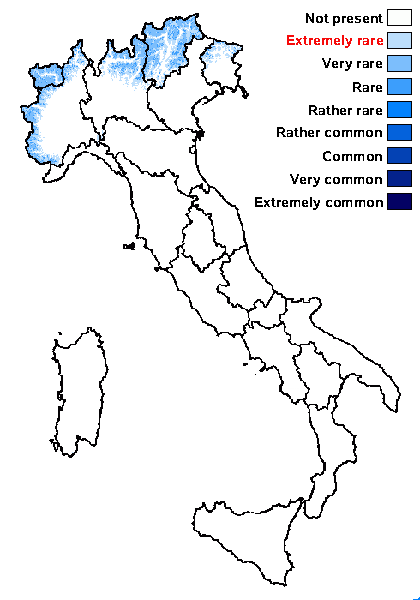
Predictive model
Herbarium samples
Growth form: Crustose
Substrata: rocks
Photobiont: green algae other than Trentepohlia
Reproductive strategy: mainly sexual
In underhangs rarely wetted by rain
paras Pleopsidium-species
Commonnes-rarity: (info)
Alpine belt: very rare
Subalpine belt: rare
Oromediterranean belt: absent
Montane belt: extremely rare
Submediterranean belt: absent
Padanian area: absent
Humid submediterranean belt: absent
Humid mediterranean belt: absent
Dry mediterranean belt: absent

Predictive model
| Herbarium samples |
 Index Fungorum
Index Fungorum
 GBIF
GBIF
